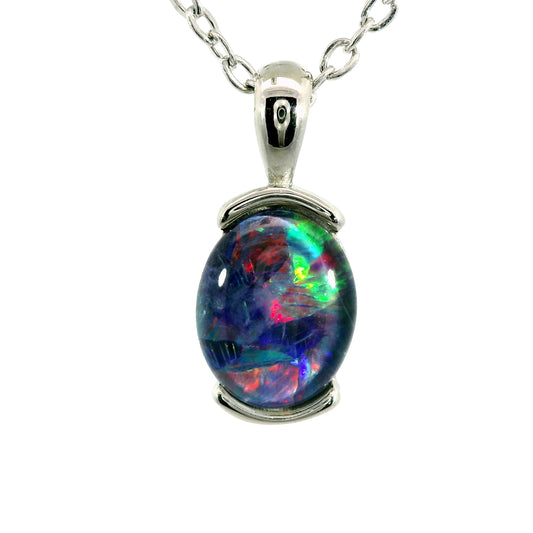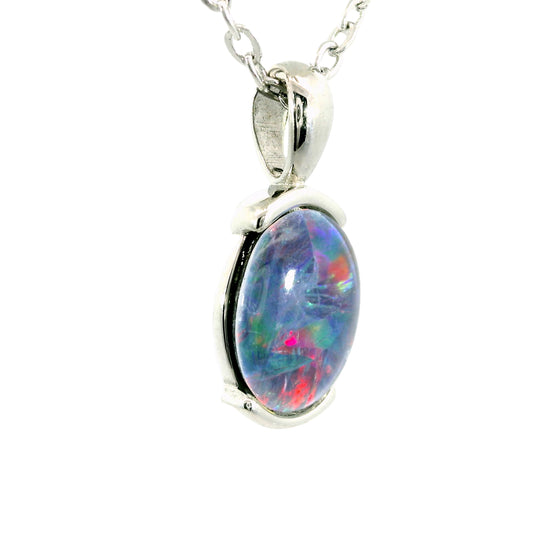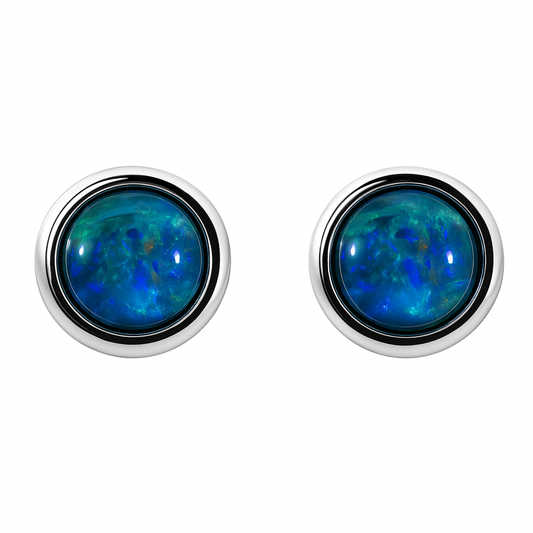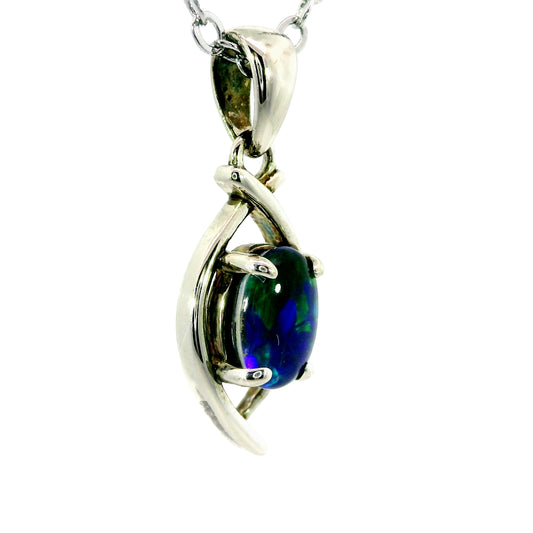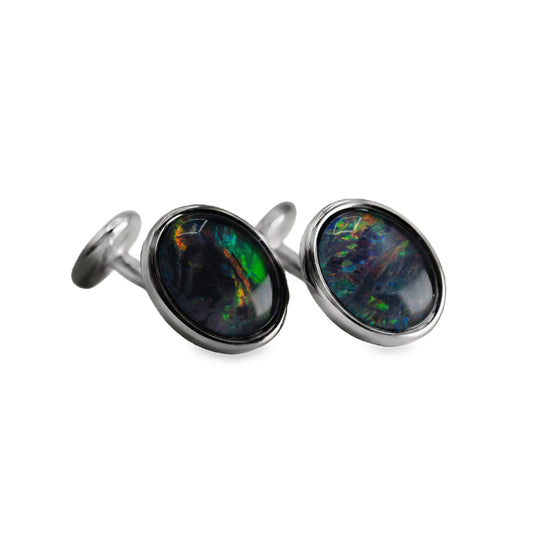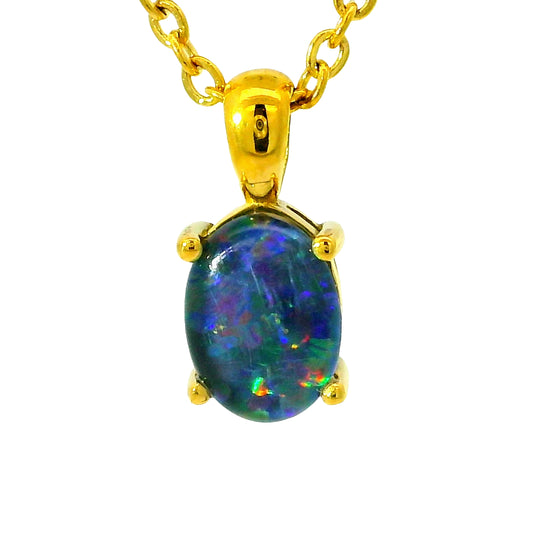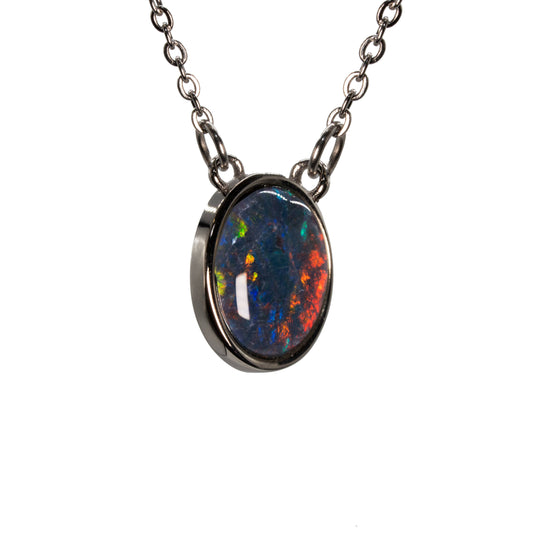A Trip to White Cliffs: The World of White Opal
If you have a fascination for the enchanting world of opals and quality opal jewellery, then perhaps it has been a dream of yours to experience their mesmerising beauty firsthand. If this is the case, then a visit to the White Cliffs - located in North Western New South Wales, Australia - is a must for you. Nestled comfortably in the outback, this captivating town is renowned for its unique deposit of pale, or white opals. Immerse yourself in the rich opal mining history, explore the opal fields, and witness the artistry of transforming raw opals into dazzling gemstones. With its stunning landscapes and warm hospitality, White Cliffs promises an unforgettable journey into the captivating realm of white opals.
White Cliffs - Home To Australian Opal
The town of White Cliffs holds a captivating allure that draws in those seeking the thrill of finding white opals. Its history dates back to the late 19th century when precious opals were discovered in the region, attracting miners and fortune seekers from far and wide. Today, it stands as an iconic destination for opal enthusiasts, adventurers, and those seeking a glimpse into the opal mining industry. Discovering opals in White Cliffs does however require a keen eye for detail and a deep understanding of the geological processes that have shaped the region. The opal-bearing material is often intermixed with clay, sandstone, and ancient marine sediments, indicating the area's geological history.
enthusiasts, adventurers, and those seeking a glimpse into the opal mining industry. Discovering opals in White Cliffs does however require a keen eye for detail and a deep understanding of the geological processes that have shaped the region. The opal-bearing material is often intermixed with clay, sandstone, and ancient marine sediments, indicating the area's geological history.
Unlike the more famous black opals found in Lightning Ridge, White Cliffs is renowned for its unique deposits of opals. These opals are predominantly white or light-coloured, often displaying a mesmerising play of colour that is seen nowhere else. These bespoke opal stones have a play of colour that manifests as vivid flashes of iridescence, with hues ranging from white and blue to green and pink. The delicate beauty of these opal stones makes them highly sought after by collectors and jewellery artisans.
20479466-SD 480p from Australian Opal Cutters on Vimeo.
Coober Pedy
Coober Pedy, located in the remote outback of South Australia, is a captivating town known for its opal mining heritage and underground lifestyle. Its name, derived from the Aboriginal term "kupa piti”, meaning "white man's hole", reflects the early settlers' practice of digging underground to escape the scorching desert heat. Since its discovery in 1915, Coober Pedy has become the opal capital of the world, attracting miners from around the globe in search of fortune.
The extreme desert conditions of Coober Pedy have shaped its unique underground culture. Residents have carved homes, shops, and even hotels into the hillsides, creating an otherworldly landscape. The opal mining industry remains vital to the town's economy, with opal fields stretching across the region. Coober Pedy's opal fields are renowned for yielding a significant amount of these stunning white opals, making it a sought-after destination for opal enthusiasts and collectors.
20992224 from Australian Opal Cutters on Vimeo.
The geological processes that shaped the region of Coober Pedy have played a crucial role in the formation of white opals, and hence the stunning opal rings, opal bracelets, and broad range of opal jewellery made possible thanks to its rich natural resources. The interaction of silica-rich solutions with surrounding rocks over millions of years has given birth to these remarkable gemstones. The opal-bearing material is often found intermixed with clay, sandstone, and ancient marine sediments, indicating the area's geological history.
For those fascinated by the allure of white opals, a visit to Coober Pedy offers an unparalleled opportunity to explore the opal mining industry, witness the extraction of these precious gems, and acquire exquisite white opals from reputable sources. The town's deep association with white opal not only provides a chance to admire the beauty of these gemstones but also enables a deeper understanding of their origin, geological significance, and cultural impact.
It is highly recommended to acquire our book to gain valuable insights into the intricate relationship between Coober Pedy and white opal.
White Opal from Australian Opal Cutters on Vimeo.
White Opal
Australia's opal mining heritage has a long and rich history, dating back to the 19th century when opal deposits were discovered. This watershed moment in the opal industry kickstarted a global fascination with these precious gemstones. Among the various types of opals found in Australia, white opals have emerged as highly sought-after treasures cherished by collectors, jewellery designers, and gem enthusiasts across the world.
The stunning and rich opal fields in Lightning Ridge, Coober Pedy, and Andamooka blessed with expanses of raw white opal have solidified Australia's reputation as a prominent source of top-quality opals. These regions have yielded some of the most remarkable opals available, celebrated for their captivating play of colour that arises from the interaction of light with the opal's internal structure. The allure of these white opals is undeniable, even in their raw form, captivates the hearts of those who appreciate their mesmerising beauty.
While white opal is the most produced type of opal, it remains exceptionally rare comparatively to diamonds, being approximately 1,000 times rarer. However, Coober Pedy yields a larger quantity of white opal compared to other varieties. Interestingly, white opal often contains a significant number of fossils, such as shells and belemnite, adding to its unique appeal. The opalized fossils found in Coober Pedy exemplify the fusion of artistic preservation and natural history.
White opals, in particular, possess a subtle elegance that sets them apart from other available varieties, such as black opals. To enhance their beauty, they are often transformed into doublets and triplets, where thin layers of white opal are delicately fused onto Boulder opal or black opal counterparts. This popular process allows the enchanting colours and patterns of white opals to radiate with brilliance, showcasing their unique characteristics and further elevating their rarity and value. Witnessing the vibrancy and magnificence of white opals is a testament to their exceptional beauty and their esteemed position within the world of gemstones.
The type, colour, and size of precious opal are factors that determine the price paid for the gemstone. The price of an opal is based on its quality and expressed per carat. Furthermore, there is a marked difference between the value of uncut, or raw opal, compared with the value of cut and polished opal. Categories such as the variety, background, transparency, spectrum, tone, origin, distribution, inclusions, carat weight, and more, all play a part in determining the correct value of the opal itself. The clarity of the colour is critical when assessing the value of opal. Red fire is the rarest colour, followed by green/orange, green/blue and blue. Therefore red fire opal is generally more valuable than a predominantly green opal, which in turn is more valuable than a stone showing only blue colour.
TYPE 1 - Light Opal from Australian Opal Cutters on Vimeo.
Australia's opal mining legacy, coupled with the prominence of white opals, has cemented the country's position as a global leader in the opal industry. Whether admired for their stunning play of colour or sought after for their rarity and value, white opals from Australia continue to captivate the imaginations of those who appreciate the splendour of these remarkable gemstones.












































































































